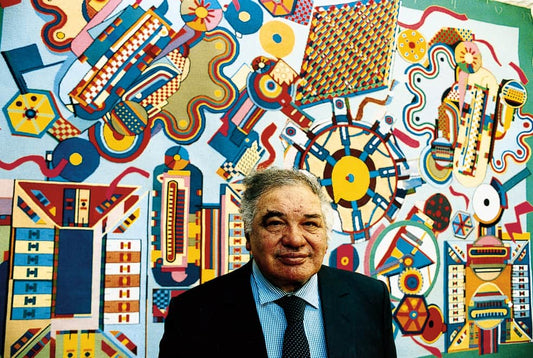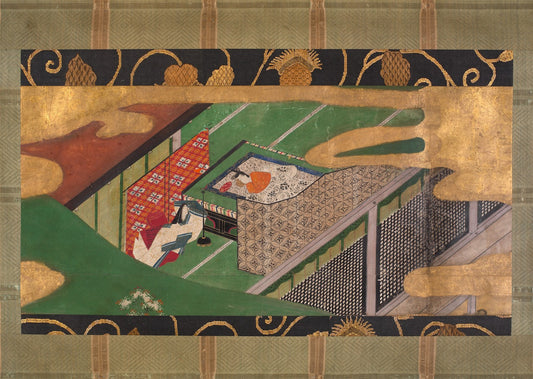Feature image: Separation, Edvard Munch via Fine Art America
Going through a breakup can bring on a stew of different and intense emotions, from anger to despair or even euphoria. With a plethora of different emotions stirring around, it can become difficult to pinpoint what exactly you are feeling. Luckily, you aren’t the first person to experience a breakup; for hundreds of years, artists have documented the same feelings you have on canvas, through sculpture, and in performance.
Art can be a very human way to feel less alone at a time when you may feel extra lonely, or art can inspire you to celebrate the new chapter of life before you. Just know that whatever it may be you are going through and feeling, there are most likely hundreds of paintings that mirror your emotions and capture your heart. Instead of going through the seven grief stages, try these pieces of art we think can help you during your next breakup.
1. “The Two Fridas” by Frida Kahlo, 1939, for when you’re feeling cognitive dissonance
Sometimes, feeling anything can take a while after experiencing a heavy heartbreak. There are few couples in art history as infamous as Frida Kahlo and muralist Diego Rivera. The couple's whirlwind marriage would ultimately end in a bitter divorce, leaving Kahlo brokenhearted. In “The Two Fridas,” Kahlo shows her own heartbreak and loss of self. She quite literally illustrates her broken heart, and we can see one of the Frida’s holding a small portrait of Rivera. Kahlo’s painting mimics the wedding portrait that she painted of her and Rivera, but this time it is Kahlo on her own.

Though Rivera was no longer part of her life, the person Kahlo was with him still exists and will always be intertwined with her. When we go through a breakup, it can feel like we are losing a part of ourselves or being haunted by the person we once were. Sometimes, the only way to free ourselves is to cut the cord or the blood vessel, as in “The Two Fridas” situation.
2. “Calypso” by Henri Lehmann, 1869, for when the breakup wasn’t mutual
Breakups can happen whether we want them to or not. Being blindsided by a breakup announcement is never a good feeling; take it from Calypso. In the Greek myths, Calypso lived on an island where heroes would wash ashore. Calypso was doomed to fall in love with each one, but no matter what she did to make them stay, the hero would always leave, leaving Calypso broken-hearted. In Henri Lehmann’s interpretation of the myth, we see Calypso looking mournfully out to the sea as Ulysses has just left her island with intervention from the gods.

There is nothing Calypso can do to bring her love back, even though she provided him with everything he could ever want. The murky colors of the painting capture the feeling of longing and regret to a tee. But remember, sometimes it really isn’t you, it’s them. Like Calypso, you’ll find love again, and hopefully, unlike Calypso, this one will stick around.
3. “Portrait of Jeanne Hebuterne” by Amedeo Modigliani, 1918, for when it was the right person at the wrong time
At first glance, this portrait by Modigliani may seem simple, but something uncharacteristic about this piece compared to his other work is the inclusion of painted-in eyes. Typically, Modigliani would choose to leave the eyes of his portraits blank, claiming he needed a deep emotional connection before he could capture them. If he did include eyes, he would rarely give them a pupil. With his lover Jeanne Hebuterne, the eyes are captured more than once throughout the many times Modigliani painted her, showing his deep love for his wife. Tragically, Jeanne Hebuterne would pass away in 1920, and Modigliani would lose the love of his life.

When a relationship seems so perfect but due to outside forces, just can’t work, it can feel like the cruelest heartbreak at all. In these times, hold on to the phrase, “It's better to have loved and lost than to never have loved at all.” Even after his heartbreak, Modigliani carried a new, softer perspective on how he went about art. He strayed away from nudes and models and focused on the humble street life around him, even granting some of his subjects eyes. But the pupil was reserved for the woman whose soul he felt he truly knew, Jeanne Hebuterne.
4. “Untitled #228” by Cindy Sherman, 1990 for when you’re feeling angry
Let's face it: sometimes, after a breakup, all you want is revenge and an outlet for your anger. In the biblical story of Judith, she is a woman who saves her village by seducing the ruling general and then beheading him. Sherman's interpretation of the tale features an almost cartoony lens. The beheaded head is nothing more than a rubber mask, and Sherman herself admits the fabrics used were mostly ones she deemed ugly and purchased secondhand. The oversaturated picture of Judith distracts from the violent nature of the story and pokes fun at the dramatics.

Most revenge fantasies die as just that, fantasy. It can be fun to imagine how we’d avenge ourselves against our ex-lovers but know we could never act upon it. Sherman offers a playful glimpse at the revenge fantasy while showing how silly our visions can look. If you’re feeling ready to fight your ex, maybe try taking up photography instead.
5. “Two Women Running on the Beach” by Pablo Picasso, 1922, for when you’re feeling free
Breakups aren’t always a bad thing, you gain a newfound sense of freedom that you can go back to doing anything you want. Picasso’s “Two Women Running on the Beach '' captures that whimsical moment where you realize there is nothing and no one holding you back. The two women almost appear to be floating, with a big smile plastered across one of the women’s faces. The bright colors and soft shapes give this painting a happy feeling. After a breakup, you have the chance to reconnect deeper with your friends and cherish those relationships more.

Picasso urges viewers to imagine freedom when looking at this painting; the wind blowing in your hair and sand between your toes captures the theme of connecting with the world around us. If you find yourself feeling stuck after a breakup or unsure of what to do next, simply look at this painting as a reminder to find joy where you can and take in the simple pleasures of life.
6. “Two Human Beings (The Lonely Ones)” by Edvard Munch, 1900, for when you’re feeling at peace
It can be bitter when a breakup is mutual. There are no hard feelings about the ending, but losing the relationship is still painful. Munch’s work captures the many faces of separation and heartbreak, but in this painting, the feeling of sadness is quiet compared to his other work. While the relationship between the two subjects is not revealed, one can feel that, at one point, they must have been close.

The warm colors of the painting capture the happy memories shared during a relationship, while the abstract background shows how a present connection can begin to melt away. The two figures are angled ever so slightly towards each other, yet distance keeps them from connecting. As they look out to the water, it's easy to imagine they are looking ahead to bigger things and peaceful days. But the memory of that relationship hasn't faded yet. It can be refreshing to end things on your own terms, but that doesn't mean you have to be happy about it.
7. “The Slow Dance” by Kerry James Marshall, 1993, for when you’re ready to fall in love again
The best part about heartbreak is that it doesn’t last forever, and when you’re ready, you’ll find a great love again. Kerry James Marshall’s “The Slow Dance” shows the intimate realities of what love looks like. There is no grand situation or undying declarations. There is just an appreciation of the moment and your partner. The illustrated glow of the candle and painted music notes mimic the feeling of how the world comes to life when you find your person.

Kerry James Marshall's depiction of domesticity is simple and gives the impression that this scene could be happening anywhere at this moment. Once you're through your breakup, you're out of the darkest part of it, and it's time to get excited for the light to come. Until then, you can look at this painting and imagine that day.
Paintings can be a powerful emotional tool during the challenging journey of healing from a breakup. When you feel like you’re the only person in the world who understands what you feel, art can show you that someone has lived your experiences before and was able to transform them into something beautiful. Paintings offer a unique form of expression that transcends words, enabling individuals to process complex feelings in a therapeutic and often cathartic manner that evokes a deeper understanding of one’s emotions. Ultimately, paintings can be a valuable companion in the journey of emotional healing, offering a silent yet profound support system during times of heartache. Next time you experience a breakup, try taking a visit to your local art gallery or museum. You may find a new perspective on your relationship and a powerful reminder that you are never truly alone.
©ArtRKL™️ LLC 2021-2023. All rights reserved. This material may not be published, broadcast, rewritten or redistributed. ArtRKL™️ and its underscore design indicate trademarks of ArtRKL™️ LLC and its subsidiaries.





